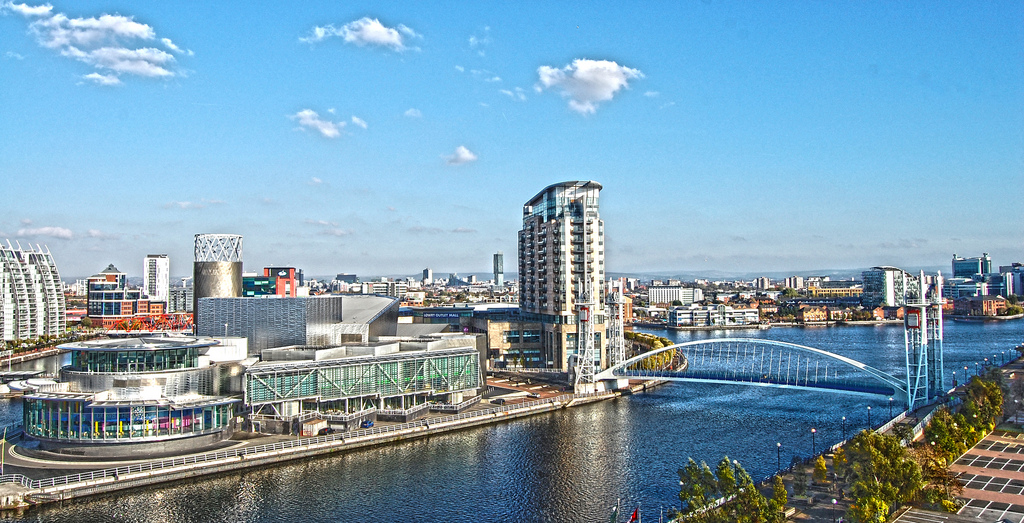No amount of political Budget gloss will cover the cracks of the UK’s productivity problem, but the role of place in the industrial strategies offers a glimmer of hope.
There was no pasty tax debacle or NICs climbdown in this month’s Budget. With the odd sweetener, notably the stamp duty relief for some first-time buyers, the Chancellor did enough to bring a semblance of calm amidst the political storm hanging over the government. Let’s not forget that in recent weeks the government has been buffeted by two Cabinet resignations, a sexual harassment scandal threatening the First Secretary of State and a grinding stalemate on the size of the Brexit divorce bill. But a week is a long time in politics, and it seems an agreement might have been reached with the EU to the tune of £40 – 50bn.
The publication of the industrial strategy white paper on Monday also gave the Prime Minister an opportunity to show that the government does have some sort of idea on how it proposes tackling the long-term challenges of technological change, an ageing population, driving UK global competitiveness and boosting productivity. Here the problems deepen and even a week in politics won’t be enough. Economic forecasts from the Office for Budget Responsibility (OBR) are bleak. As Paul Johnson of the Institute for Fiscal Studies said, “We are in danger of losing not just one but getting on for two decades of earnings growth. If these forecasts are right, it’s very grim for living standards. It’s unprecedented.”
Unfortunately, it’s hard to argue with the principle behind the OBR’s assumptions on productivity growth – or lack thereof – and the likely economic impact. For years the OBR expected UK productivity would return to a trend rate of 2% per year post financial crisis. For years it has failed to do so. Time to revise those forecasts. As Andy Haldane, Chief Economist at the Bank of England, has been warning for some time now, UK productivity is so dismal “You would have to go right back to the 18th century to see a similarly lengthy period of stagnant productivity.”
In this context the question is whether the Budget or the industrial strategy white paper live up to the sheer scale of the problem. Part of the issue is that we don’t know the marginal impact of many government policies designed to boost productivity. For example, should additional resource go into incentivising more young people to take A-level maths, or finding alternative ways to upskill the 30 –45% who don’t get five good GCSEs?
Do we have the right institutional architecture in place to maximise the returns of government R&D investment? A review by EY on the Catapult Centres – designed to channel investment and spur key growth sectors – concluded that “implementation of the Catapult concept has been inconsistent and could have had a significantly greater impact in delivering innovation, economic benefits and value for money”.
Other questions don’t seem to be on the table. How, for example, do we improve the quality of management within UK firms, where two thirds of people work for companies which are below their industry productivity average? It was disappointing not to see a boost to ‘Be the Business’, a tool spun out of UK Commission on Employment and Skills (UKCES), which has since been abolished as a non-departmental body and closed at the end of last financial year. How will a National Retraining Scheme – appropriately focussed first on digital and construction skills – meet the needs of local labour markets and local industrial strategies?
On matters local, here was a glimmer of light. For the first time, government was clear what it expected of places when putting forward proposals for local industrial strategies, setting out in surprising detail how it wanted to ensure ‘place’ is a central feature and not just an adjunct to sector deals. We heard a bit more on the city and devolution deals agreed or in the pipeline, with the Midlands strengthening its hand through the West Midlands Combined Authority deal and the hint that Midlands Connect would soon emulate Transport for the North as a statutory, strategic transport body for the super city-region. This was accompanied by a broader commitment to regional ‘powerhouses’, including a welcome nod to the work of the South West Rural Productivity Commission across its four LEP areas, as well as heightened (or renewed) collaboration between Bristol, Cardiff and Newport (which had – under the previous generation of local leaders – come together as the Great Western Cities).
There were a few ‘devo maybes’, particularly the North Tyne area, which has shown imagination and perseverance following the breakdown of talks across a North East footprint, and only the possibility of city deals for Belfast, mid-Wales and north Wales, Cheshire and Warrington. But central government seems to have listened to many of the sophisticated proposals put forward by local leaders since the launch of the green paper at the beginning of the year. Of special note is the collaboration in the between places with a shared interest in nuclear, automotive and life sciences industries, the first indication that government is finally thinking both spatially and sectorally.
The gloom of the economic forecasts cast a long shadow over the Budget. As the government heads into a critical stage of Brexit talks in the next couple of weeks all eyes will be on whether and what kind of trade deal the UK can strike with Europe. But the hard work will need to be done at home. Building a more productive, resilient and inclusive economy, which is based, not on an abstract idea of national productivity growth, but on the strength of real people, places, business and enterprise. The heat might have come off the Chancellor in the short term, but it’s going to be a long slog ahead.
Photo credit: Zuzanna Neziri / CC BY 2.0
